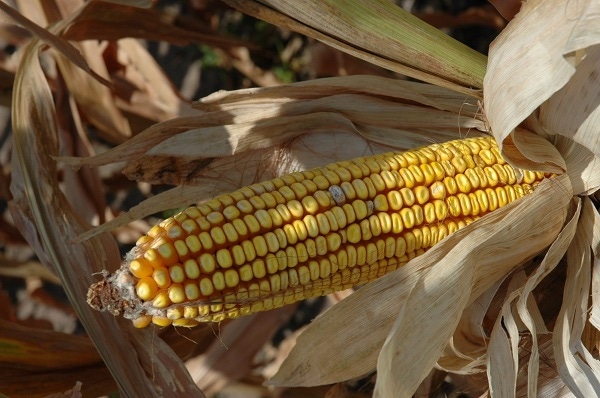
It's no secret. Unless disaster strikes, it's going to be a record or near-record year for the U.S. corn harvest. The latest U.S. Department of Agriculture crop production report, issued Sept. 11, projected a record national corn output this year of 14.4 billion bushels, up about 3 percent from 2013.
That's a lot of corn, but add to that an exceptionally good forecast for other global corn producers, an exceptional wheat harvest in Europe, less corn demand by the U.S. livestock sector because of historically low herd numbers, and a limited availability of commercial storage space for corn, and it all sets up to be a difficult year for corn producers.
What could have been a high profit year now becomes a concern for just about every corn farmer, who has watched with enthusiasm a cooler, wetter growing season and the promise of a good yield, only to discover a huge supply, falling prices and less demand at the dawn of harvest.
For the latest on southwest agriculture, please check out Southwest Farm Press Daily and receive the latest news right to your inbox.
But as grim as all of these sounds, farm economists are advising producers to stay alert to trends, comb over contracts carefully and give some additional thought to corn storage as a way to overcome the current hurdles of supply, price and demand. With luck, they say, farmers might end the current exceptional crop year in good shape and maybe even with a few bragging right.
Associate Professor Corinne Alexander, a Purdue Extension specialist of grain marketing, says farmers are facing a limited set of alternatives over what to do with their corn in a year when prices are volatile and supply well outweighs current demand. They include selling for prices below what they expected, or paying a premium price for commercial storage in hopes of sitting out the glut and then sell when prices begin to rise again.
Storage option
She says neither solution is particularly appealing and encourages farmers to at least consider wagering their good yielding corn crop this year against the risks required to acquire an on-farm storage system large enough to provide producers a low-cost storage option. She says having the crop on-farm and ready for shipping when prices are better and when buyers are more abundant could help maximize gains on a large volume of corn.
"If you don't have storage on your farm, your next best choice might be to sell even if you have to take less than you wanted," she said. "It's a complex equation and there are no easy answers."
But regardless what you do, Alexander advises producers to spend time calculating all the variables.
In a recent Purdue Extension report, the key variable in determining whether to store or sell crops is the "opportunity cost," according to Alexander. That is, farmers should calculate whether they would earn more by depositing the proceeds of an immediate sale or by storing their crops, either on the farm or in a commercial storage facility, and hope for higher prices later.
Low interest rates support storage
But current low interest rates available mean farmers probably won't lose much, if anything, by keeping their grain in the bins instead of money in the bank, she suggests.
Crop analysts agree, the year seems certain to come down to a question of price versus storage. The wise among us have already been shopping the price of commercial storage and putting the pencil to delivery costs. Some, perhaps, have gotten creative and either have added on-farm storage or know someone who has and, perhaps, with some extra storage space in those bins.
Regardless, unless you already have sold on contract, as the big Corn Belt harvest push gets underway, in the end it comes down to selling for the going price or storing your crop. How low corn prices will drop is yet another factor to be considered.
Corn prices have been battered since mid-summer when it became apparent that cool, wet weather would provide ideal conditions for a bumper crop. The December corn contract, the most actively traded in the futures market, peaked at $5.10 per bushel in mid-May and has since slid to its lowest level in four years. Prospects for the basis price—cash value farmers receive for the immediate sale of their crop at the time of harvest—is not good because of the huge crop coming up for sale.
An unseen relief might come, Alexander says, if U.S. consumers step up and opt for low-price corn at the market. While the U.S. ethanol industry is using just about as much corn as they need currently, some late movement of corn futures may occur once prices hit the basement, and that could provide a spark to re-energize corn sales. Those storing corn through the worst of it could come out fairly well on the other side.
About the Author(s)
You May Also Like




